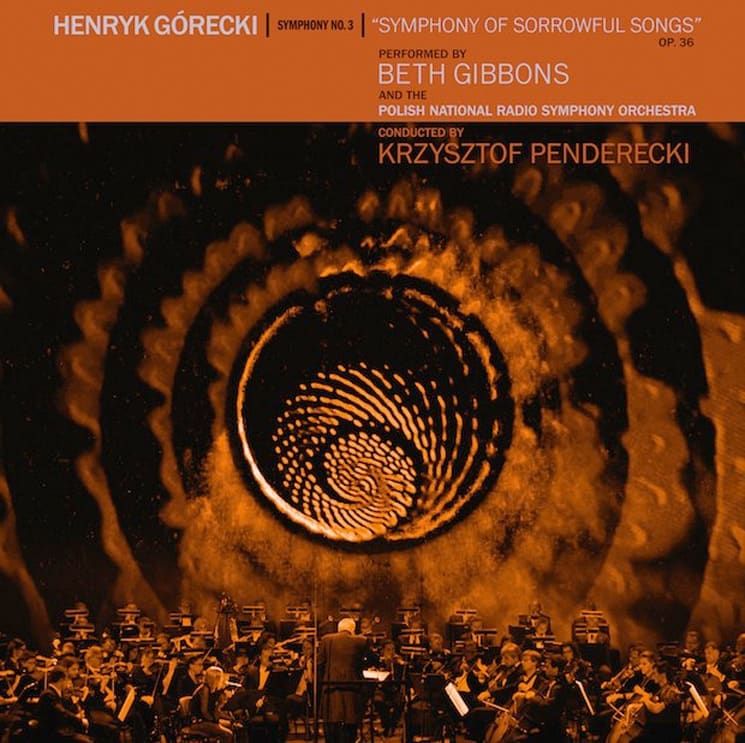Henryk Górecki's Symphony No. 3 took 15 years to become a hit. After premiering in 1977, a 1992 recording gave the then-living composer an anomalous breakthrough — selling more than a million copies, placing it well beyond the usual sales targets of a 20th century composer. Doubly so for a weighty score that handily earn its parenthetical title, Symphony of Sorrowful Songs. But there's something in its mesmerizing rawness, its patient eruptions, that seems to resonate beyond classical's usual orbits.
Maybe that's why it's drawn its interest from adventurous indie faces as of late. Saxophone virtuoso Colin Stetson did a reimagined version in 2016, and now it's brought Portishead's Beth Gibbons her first release since 2008. Gibbons was invited to collaborate with Polish National Radio Symphony Orchestra, and the performance, in Warsaw in 2014, was recorded. (A film version is also being released.)
In the hands of Gibbons, the orchestra, and conductor Krzysztof Penderecki, the music slides from doomy lurches to shimmering sweeps to, occasionally, gorgeous reprieves from its own grievous weight. The orchestra carries its countryman's music with sheer orchestral brio, and Gibbons — who had to learn the text without knowing Polish — pushes her voice into its highest echelons, tapping into the latent power of the piece, and humanizing its sentiments with raw affect.
If you need an entry point into an incredibly potent piece, Gibbons and company offer a take on Symphony of Sorrowful Songs that lingers.
(Domino)Maybe that's why it's drawn its interest from adventurous indie faces as of late. Saxophone virtuoso Colin Stetson did a reimagined version in 2016, and now it's brought Portishead's Beth Gibbons her first release since 2008. Gibbons was invited to collaborate with Polish National Radio Symphony Orchestra, and the performance, in Warsaw in 2014, was recorded. (A film version is also being released.)
In the hands of Gibbons, the orchestra, and conductor Krzysztof Penderecki, the music slides from doomy lurches to shimmering sweeps to, occasionally, gorgeous reprieves from its own grievous weight. The orchestra carries its countryman's music with sheer orchestral brio, and Gibbons — who had to learn the text without knowing Polish — pushes her voice into its highest echelons, tapping into the latent power of the piece, and humanizing its sentiments with raw affect.
If you need an entry point into an incredibly potent piece, Gibbons and company offer a take on Symphony of Sorrowful Songs that lingers.
